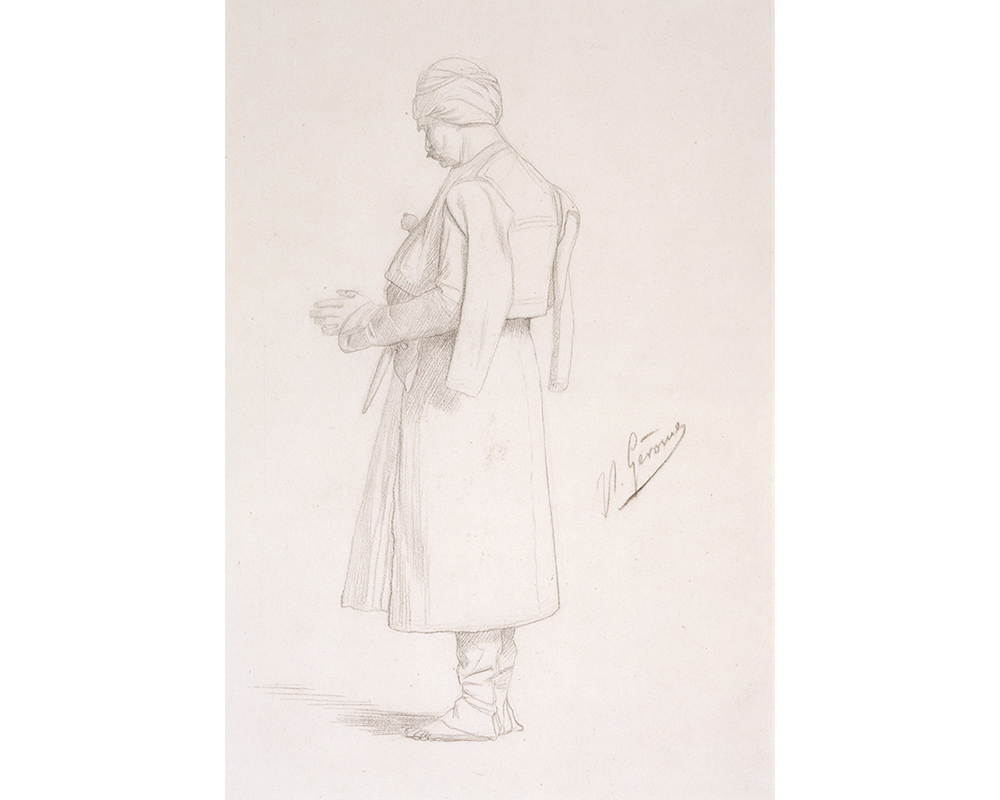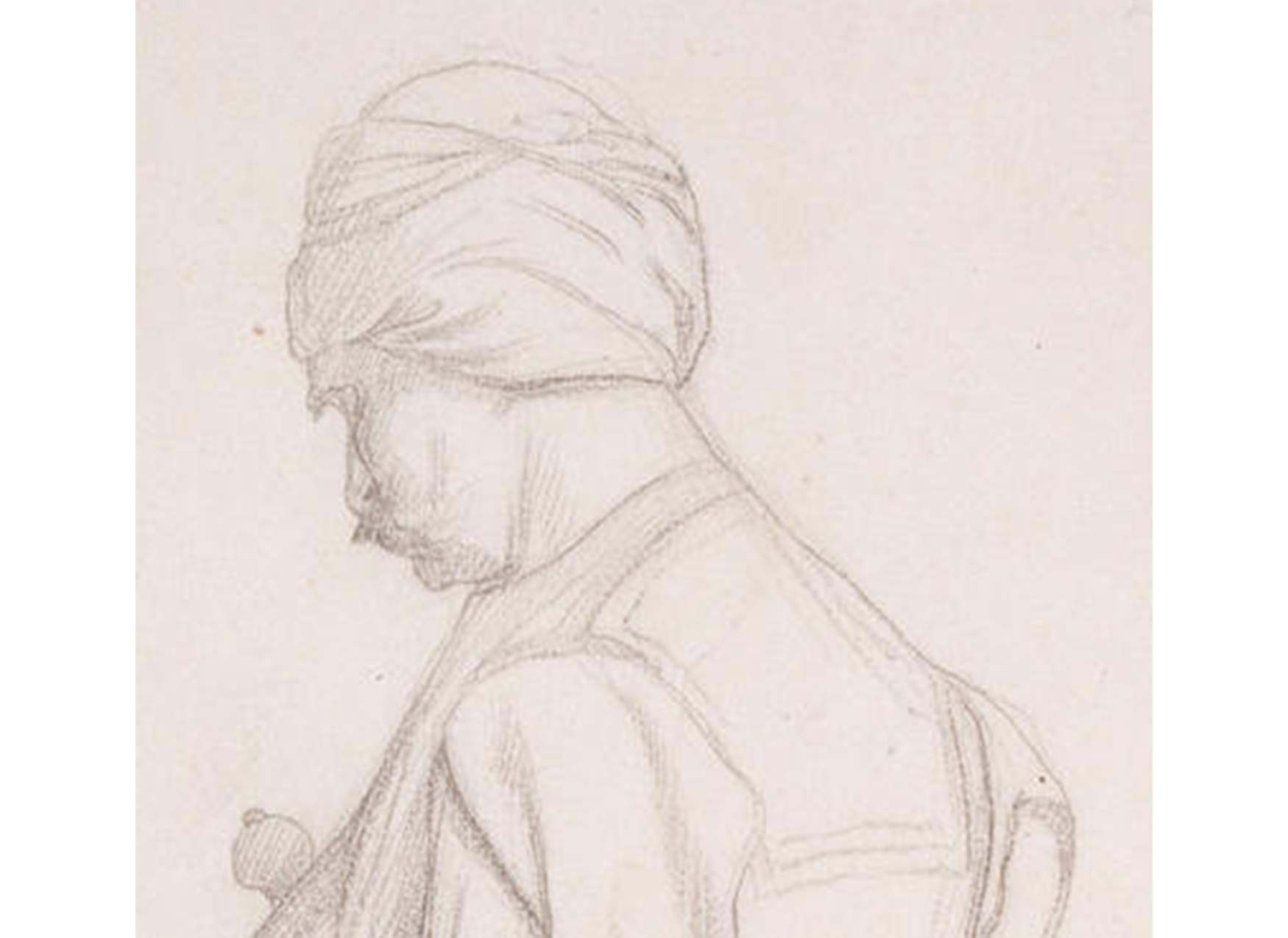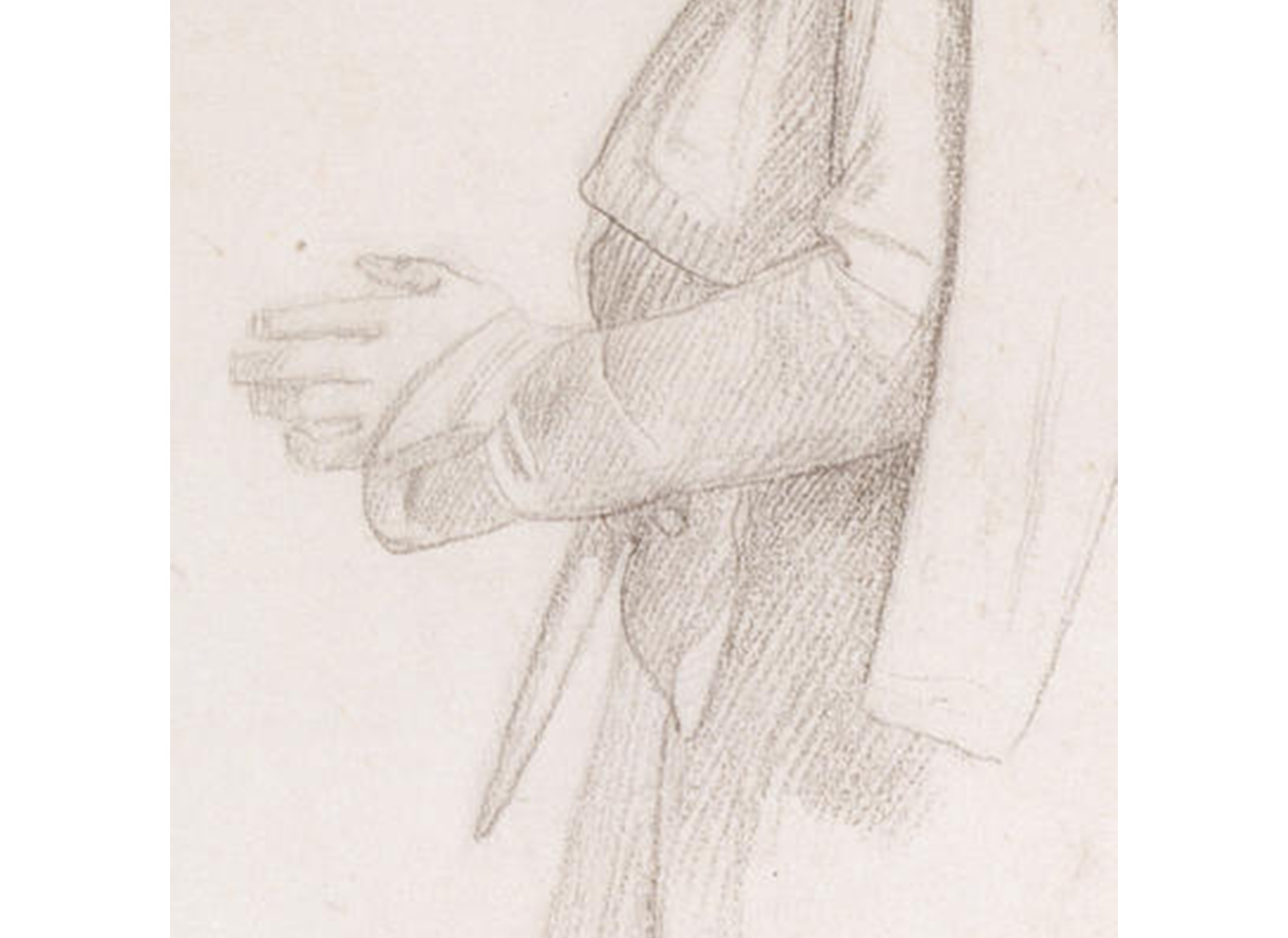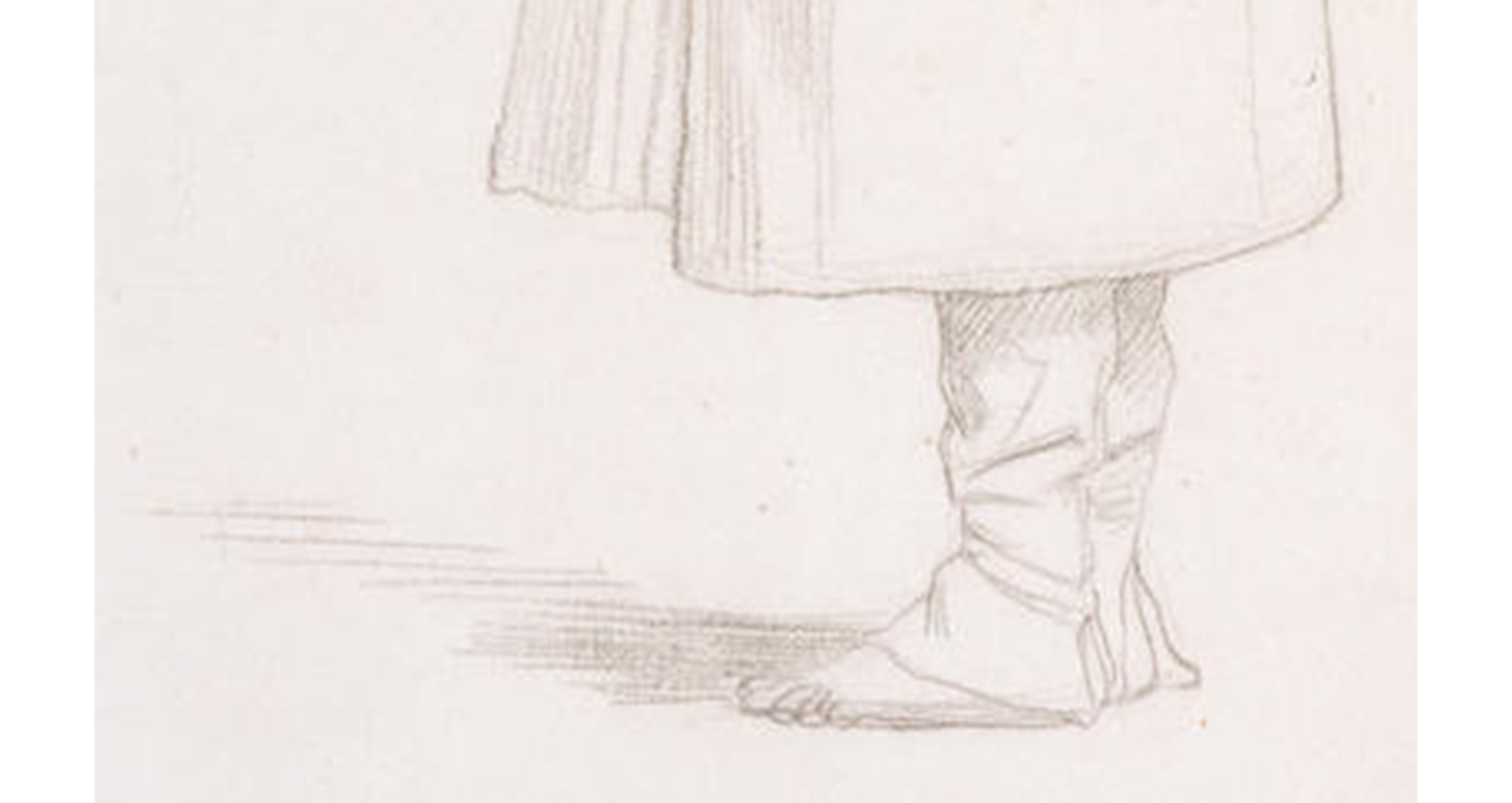
Standing Turk
Maggie Kurkoski is a member of the Smith College class of 2012 and the Brown Post-Baccalaureate Curatorial Fellow in the Cunningham Center.
Over the course of his career, Jean-Léon Gérôme travelled extensively, with trips to Spain, the Arabian Peninsula, Palestine, Turkey, Russia, Italy, Algeria, Morocco and Spain. The journalist Frédéric Masson, who accompanied the artist on a months-long journey through Egypt and Turkey in 1868, considered Gérôme an energetic companion, writing: “The first to rise in the morning, [Gérôme] superintends the departure; then erect in his saddle, he keeps going through the long hours, smoking, hunting, tracing with a rapid stroke in his sketchbook a monument or a silhouette.”
Standing Turk is one such travel drawing, presumably from Asia Minor. In it, a Turkish man stands away from the viewer, seemingly unaware of the artist. His jacket hangs rakishly from his shoulders. The work is not a quick sketch, but a full fleshed-out drawing, with careful cross-hatching throughout.
It was on the basis of such sketches that his contemporaries saw Gérôme as an accurate illustrator of the Middle East, even an “ethnographer” of the region. After all, each revealed a tremendous precision and eye for detail. Likewise, Gérôme admitted to taking photographs and working from those prints, underscoring his reputation for cultural accuracy.

Detail of Standing Turk
Such precision seems apparent in Standing Turk—in it, Gérôme focuses on the man’s ethnic costume, from his turban to the saber hanging from the man’s waist.

Detail of Standing Turk
Still, Gérôme still played around with what he saw in his travels to create idealized, and even fantastic, scenes from abroad. During the late nineteenth century, artists and writers embraced their own vision of the Middle East, a fantasy of hashish and proud sultans and harems. This attitude, later called Orientalism, deeply affected the art of the period, including the paintings of Gérôme. There is an element of fantasy in all his works.
At the time Gérôme drew his Standing Turk, the Ottoman Empire was in flux. In particular, Constantinople (now Istanbul) had welcomed many Western fashions and styles. The photographs of Pascal Sebah, for example, show men in suits and traditional garments alike wandering the streets, much to the chagrin of Orientalist artists, who preferred the unaltered Eastern landscape of their imaginations.

Detail of Standing Turk
Would Gérôme have met the model for Standing Turk on the street? By this point in Ottoman history, the fez had nearly replaced the turban as the headgear of choice. While Gérôme may have found an individual in this particular get-up, it would not have been a reflection of what most Turkish men were wearing at the time. Perhaps he even paid a model to pose for him.
Through such vivid imagery, Gérôme added fodder to his peers' Orientalist visions. To them, a sketch such as Standing Turk became an irrefutable rendering of what all Turkish men wore. The reality is much more complex.